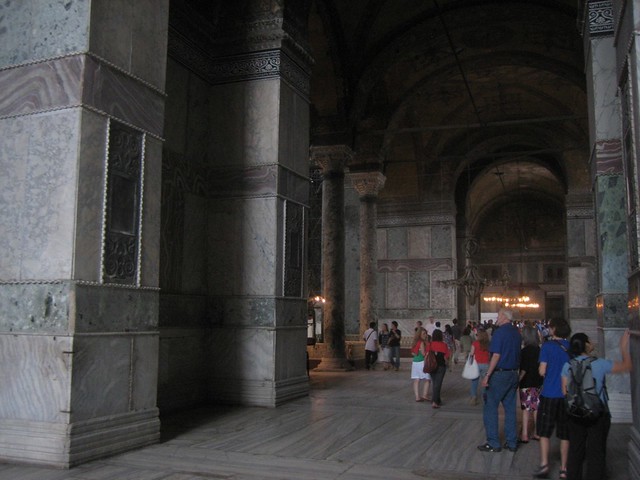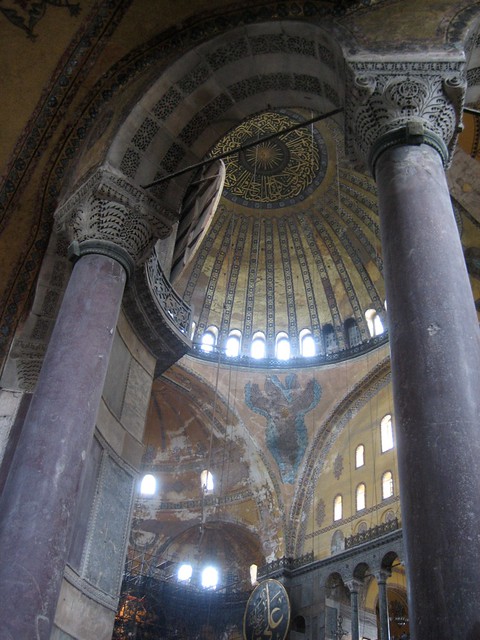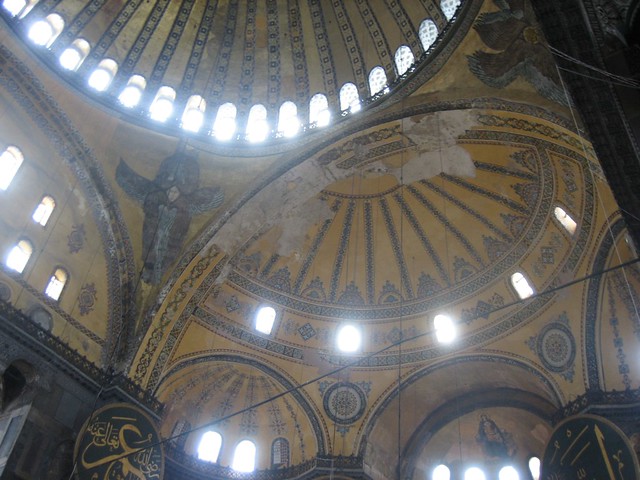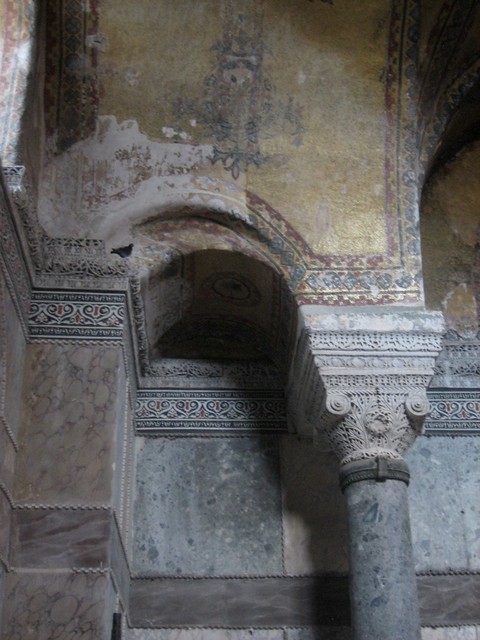I'm a 21st century person. I've seen a lot of huge architecture, including sports stadiums, huge airports like Toronto Pearson's Terminal 1, and giant structures like the CN Tower and the Gateway Arch in St. Louis. None of this prepared me for the overwhelming scale of Hagia Sophia.
Of course, it isn't as big as these more modern structures - I think what made it overwhelming was the scale of history in this building. If you multiplied the volume of this ancient building by its age, measured in millenia, by the amount of history that has happened beneath its dome, by the historical figures who have walked through its giant front door, by its central importance to empires, by the number of legends and stories attached to every stone in the place, this would likely be the most massive structure on earth.
After the previous basilica on this site had been destroyed in a theological-political-sports riot (surprisingly common in those days), the Roman/Byzantine emperor Justinian had the present building built to replace it, completed in 537 A.D. A lot of Istanbul's history happened in years with three digits.
For almost a thousand years it was the religious heart of the Byzantine Empire. In the 13th century, it spent 60 years as a Catholic Cathedral when Constantinople was owned by Italians - and even then it hosted the coronation of an emperor. When the Ottomans took over Constantinople, Mehmet the Conqueror immediately converted it to the most important mosque in his empire, which it remained until the founding of the Republic of Turkey in the 1920s.
The chief engineer had previously taught at the Academy in Athens - the same Academy that, centuries before, had been founded by Plato. This makes the building a living relic of classical antiquity, a transmission across history from a different world. When you look at the shapes and the stonework, you are looking at the geometry of Euclid and a direct architectural lineage that includes the greatest structures of ancient Greece and Rome.
The many different kinds of stone and marble were brought from across the Empire, and many of the columns were taken from older buildings. We aren't just looking at a Christian church or Islamic mosque, but pieces of ancient temples to Apollo and Athena.
No building - certainly no church - had ever been built in this form or at this scale before. The genius of the design is not just it's height (you could fit a 12-story building underneath it) but in the way that the semi-domes on each side open up the space and allow the main dome to be seen from anywhere in the building. My architecture, history, and ceramic tile obsessed guidebook points out that while the dome of St. Peter's in Rome is bigger, you can only see it if you're standing underneath it. This dome floats over the entire space, always present, like the eye of God.
This architecture was so striking and powerful that it influenced the design of all of the great Ottoman mosques of the city. As you walk around the city, you see echoes of Hagia Sophia (or Ayasofia) bubbling over the cityscape in all directions.
This is one of the few times in my life where a building has given me goosebumps. The scale and glory of place is awe-inspiring, even to someone like me who has seen a lot of majestic architecture - it is difficult to imagine what it must have been like for the original worshippers, or even more so for some visitor from dark ages Europe, where the knowledge of how to build at this scale had been utterly lost.
After my visit, I felt I had a better understanding of Yeats' lines, from "Byzantium":
"A starlit or a moonlit dome disdains
All that man is"
While we're discussing Yeats' "Byzantium" I was also reminded of these lines:
"Miracle, bird or golden handiwork,
More miracle than bird or handiwork,
Planted on the star-lit golden bough,"
...by the birds who live inside the building, who perch in the capitals of the columns:
To see more of my pictures of Hagia Sophia and the very pretty Ottoman mausoleums nearby, look at my Flickr set.



